For as long as I can remember I have wanted antique looking butcher block counter tops in my kitchen. That nice, gorgeous dark stain. However the countertops we bought were from IKEA were a light wood color and at the time that we renovated our kitchen, IKEA did not sell dark wood countertops. So off I went to learn all I could about staining butcher block countertops in the hopes of achieving that dark wood counter color of my realistic expectations of my home decor dreams.
Side note, it’s day 70 of the kitchen renovation by the way. Day Seventy.
AN INTRODUCTION TO STAINING BUTCHER BLOCK
DIFFERENT TYPES OF STAIN
The thing that’s deceiving about dark butcher block countertops stains is that usually they are stained with “regular'” polyurethane stains such as Minwax, Rustoleum, etc. and those stains aren’t food safe.
Meaning that if you plan to use your countertops to place food on, cut food on, roll out dough and bake bread, you need something to protect the color stain to make them food safe.
A popular one is Waterlox. The snowball effect of that is that all of this requires maintenance. Quite a bit actually. And it really depends on how you use or plan to use your kitchen. So what works for one person, their cooking habits and overall lifestyle, may not work for another.
I wanted a food safe stain. Period.
ADVENTURES IN STAINING BUTCHER BLOCK
Now before I set out on what happened in my staining adventure, in hopes of helping out anyone in the same predicament, I had read a ton of blog posts from other bloggers who shared their stories and experiences with butcher block counter tops.
Some of the most helpful are the following:
- Old Town Home – And what they wound up using in the end along with links to their review of their IKEA counter tops.
- Addicted 2 Decorating – If you want dark countertops, you need to read every post that Kristi has written about her experience with staining them dark, using Waterlox and what happened that she had to re-do them four times.
- Newly Woodwards – Which is what I wanted mine to look like.
- Driven by Decor – Who dives into Waterlox and Mineral Oil
- The Art of Doing Stuff – I love everything Karen does and her kitchen is like a dream!
- Chris Loves Julia – Which made me ask why I didn’t take the time to find Walnut butcher block to begin with.
- Domestic Imperfection – They wrote a great review of how their IKEA butcher block counter tops have held up after 2 years.
- The Ugly Duckling House – Read how Sarah takes care of her Lumber Liquidators walnut butcher block counter
After reading all of the above and then some, I came across a product from The Real Milk Paint Company called Dark Tung Oil that has excellent reviews.
It was like the heavens parted and I thought finally! A dark wood stain that’s food safe. Then I read these posts from bloggers who had used it with success:
All of their results looked amazing so I thought I had found my answer.
DARK TUNG OIL AND CITRUS SOLVENT
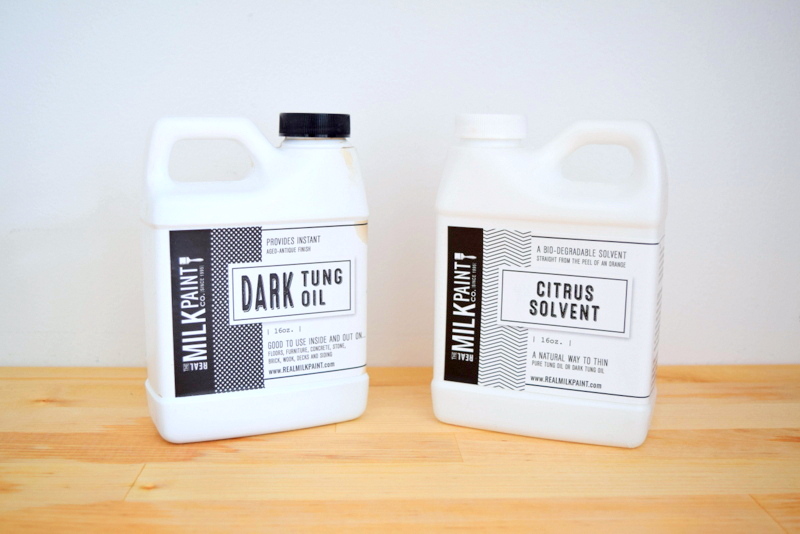
Unfortunately it didn’t work out that way.
I want to be clear, it is not not the fault of the product, but that of the specific butcher block that we purchased and the color undertones it has.
Like any cautious person I tested out the Dark Tung Oil on a scrap piece of our butcher block counter top.
BUTCHER BLOCK WOOD SPECIES TIP
It is important to note, we bought the IKEA HAMMARP butcher block counter top in Birch. At the time I wrote this post, IKEA had it available in Oak and Beech. I do not like Oak wood grain and the Beech tends to have a more rose undertone so we went with Birch.
IKEA currently does not have solid butcher block options anymore. But what they do have are the KARLBY, BARKABODA, MOLLEKULLA, PINNARP and the ECKBACKEN, which are a wood veneer and wood blend.
As a huge fan of butcher block countertops, I have to admit it’s been so disappointing to have a lot of IKEA’s options disappear. I don’t want veneer. I want a solid wood counter.
TESTING OUT THE REAL MILK PAINT COMPANY – DARK TUNG OIL STAIN
Here is how my Dark Tung Oil experiment went. I even tried it over wood filler to see how it would look.
1 Coat of Dark Tung Oil
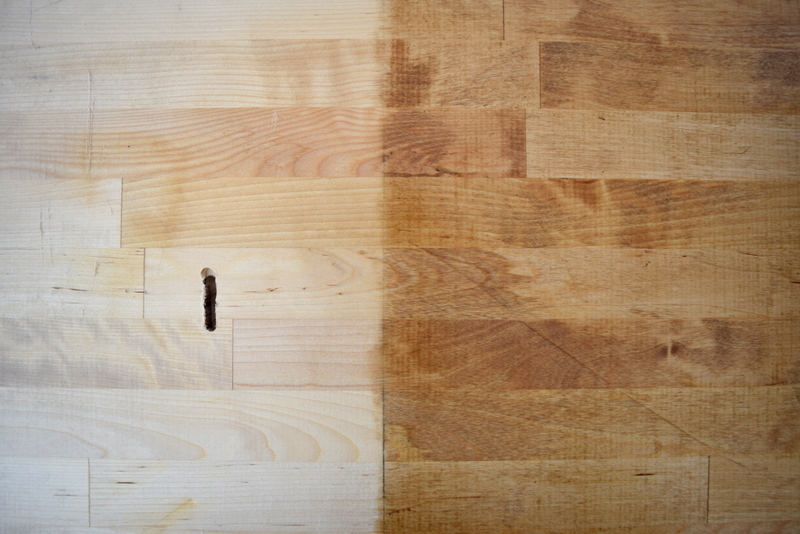
2 Coats of Dark Tung Oil
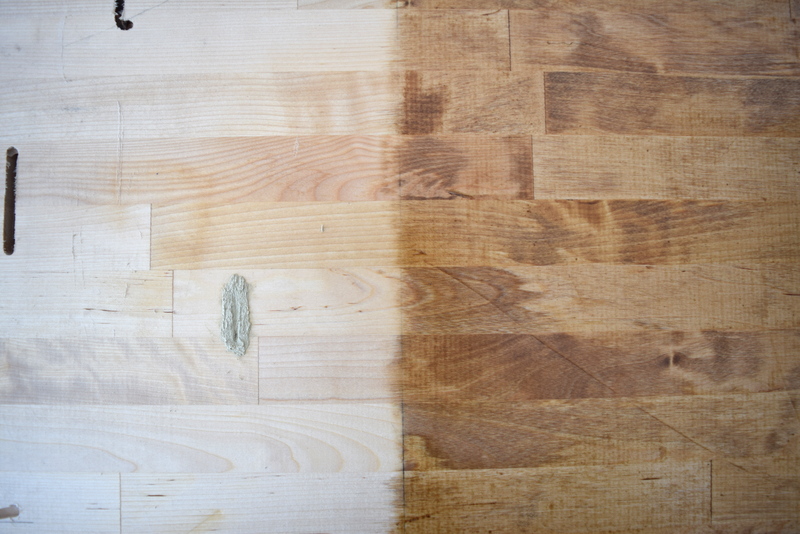
3 Coats of Dark Tung Oil
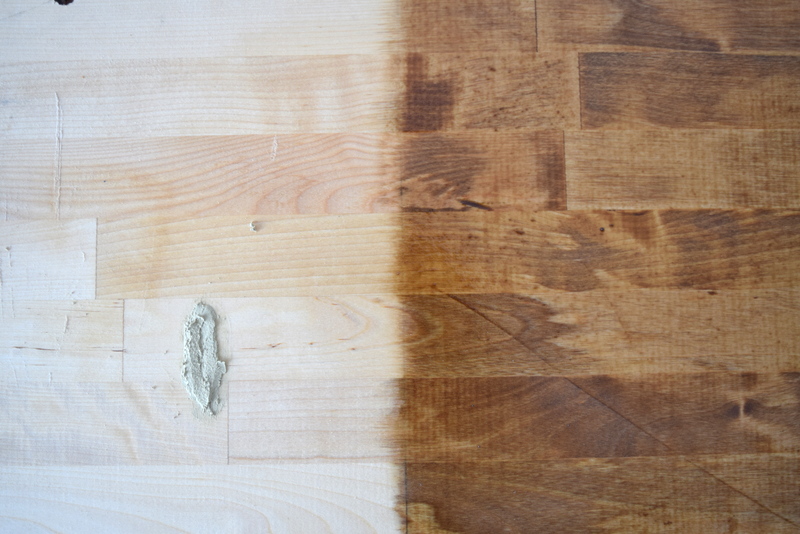
4 Coats of Dark Tung Oil
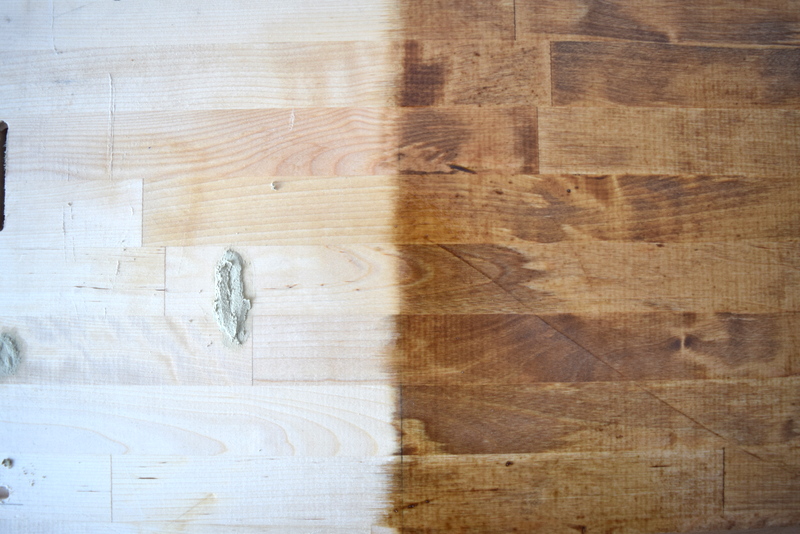
By this coat I knew it wasn’t going to work. The problem however, was not the stain. The stain was great.
The problem were our floors. They cover the entire first floor and they are from Laurentian Hardwood – their Kendall Lock Exotics collection in Ironwood.
We put this hardwood in our home 5 years ago when we first moved in. It’s a good product that we wanted to extend into the kitchen during this remodel to create a bigger cohesive space on our first floor.
I have to thank Floors First for their helping us to locate it when we couldn’t find it anywhere and no other dealer would help.
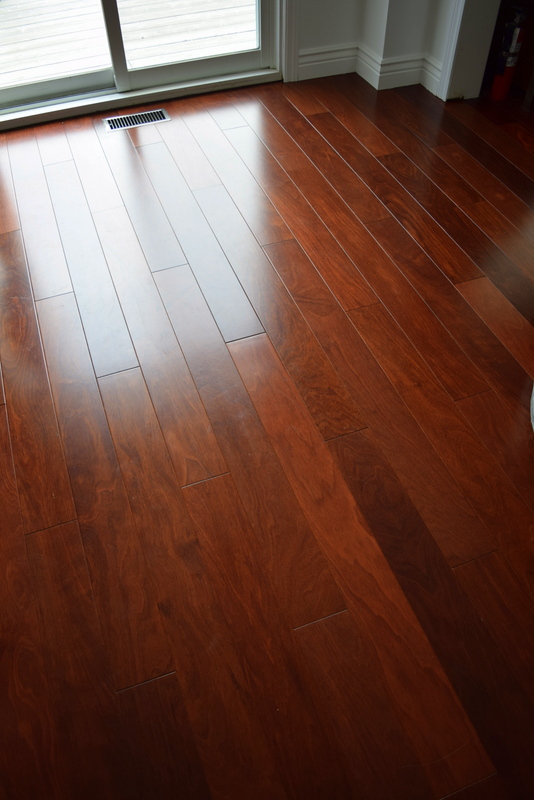
And this is what the stained counter top sample looks like next to it.
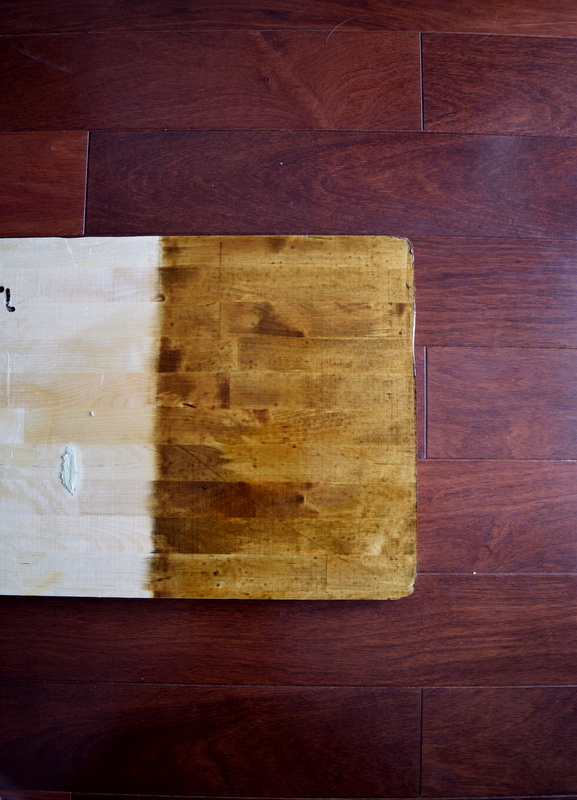
Yeah. I cringed too.
They just look awful next to each other. The oil stain color just did not work with this particular wood and our dark floors. I know computer monitor colors can be deceiving but it was full of yellow undertones.
That piece also took over a week to fully cure and dry, but I believe that was due to my quick application process. So that was a no go.
STAINING BUTCHER BLOCK COUNTERTOPS – Decisions, Decisions
In the end after much discussion with friends and some research into making my own stain with tea and even coffee, it was Kristi’s post- especially after this incident she had with lemon juice and Waterlox – that I decided what to use.
And that is mineral oil.
Cheap, easily available, mineral oil.
PS – I have since updated this post at the bottom to tell you how that mineral oil thing is going
This is a side by side comparison of our countertop and an untreated scrap block of the HAMMARP. Our countertop at this point had been treated with 7 coats of mineral oil. I plan to follow Old Town Home’s instructions on how to care for them.
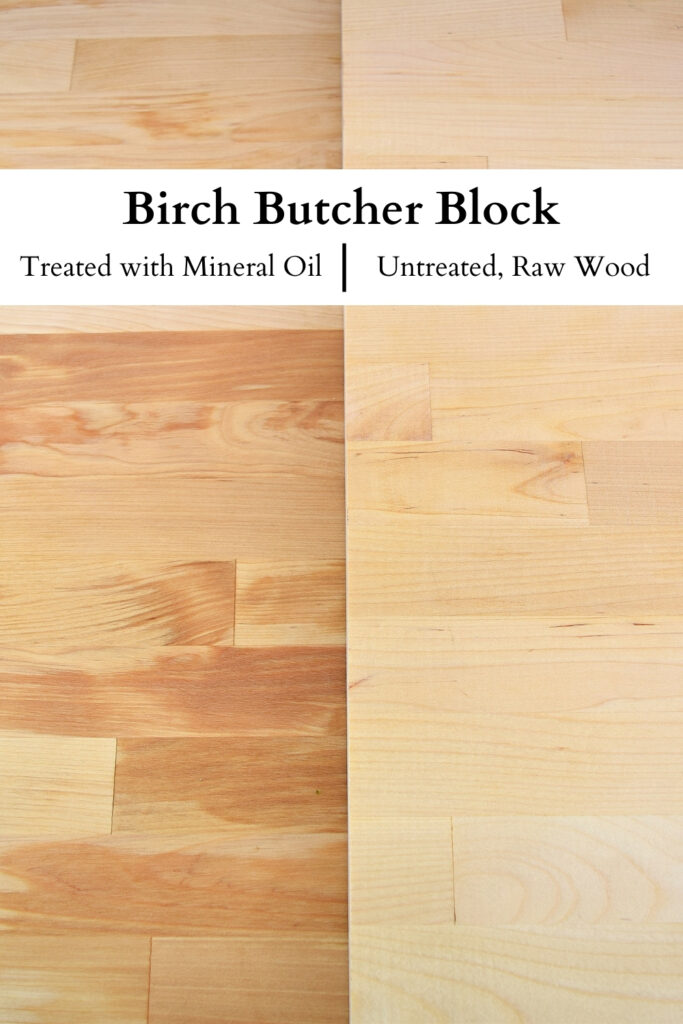
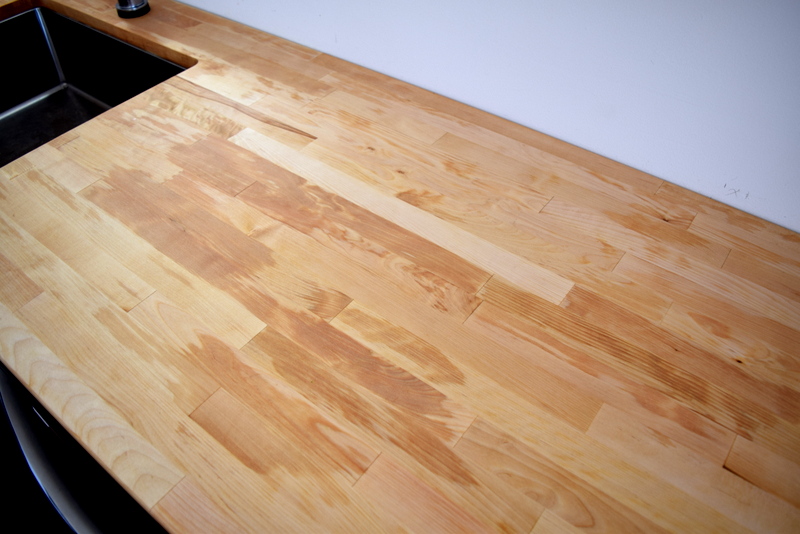
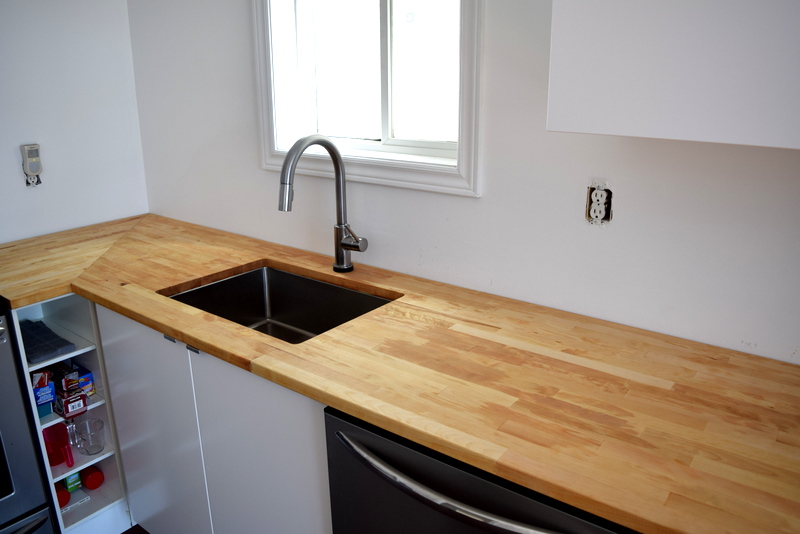
Remember these lessons when it comes to Staining Butcher Block:
Wood species matters.
What wood species your butcher block is made from will impact the final result of your stain, no matter what you choose to stain it with. Oak looks very different than Beech. When you read a post online or see an example of stained wood, pay attention to what wood it is versus the one you have in your home.
Figure out how you plan to use your counter tops.
Are they there to look pretty and you never place food on them? Or do you want to chop on them directly? That will impact what you use to treat them and what stain you use.
Do a test stain.
Use a scrap piece of your wood before you go slathering your end product with stain. Preferably do this before you install your counters. Yes, people have done this. I cannot emphasize this point enough. DO A TEST STAIN.
Colors online do not look the same in person.
Stain colors online, that you see on your computer monitor and cell phone screen, just like paint color swatches, are deceiving. Refer to the test stain tip. The last thing you want is a splotchy mess that does not last or creates more problems for you.
Buy the Butcher Block in the color you want
The best solution to achieving the butcher block color of your dreams, is to buy the butcher block in the wood color that you want it to be. Birch tends to be lighter. Walnut is darker. But there are always exceptions to every rule, and sometimes you may not be able to get or even afford the countertop in the wood color you want. That’s why I wrote this post, so that it can help anyone considering staining their butcher block.
FOOD SAFE STAINS
For those of you who have a butcher block counter top and are still looking for a food safe stain, here are some brands that offer food safe stains. I have personally not tried any of these but they’re worth reading the reviews.
Tried and True Wood Stain
SamaN Interior Water Based Stain
Rubio Monocoat Oil Plus 2C
BUTCHER BLOCK COUNTERTOP TREATMENT UPDATE – 2021
Since writing this post we moved and renovated another kitchen where we also installed butcher block. I stopped using Mineral Oil on that one after finding a better solution, which I will explain in that post.
Want to read about the whole kitchen renovation process and see the Before and After?
1 – Planning your IKEA Kitchen Remodel
2 – Installing your IKEA SEKTION kitchen cabinets
3 – Adventures in Staining Butcher Block
4 – IKEA Kitchen Before and After Reveal

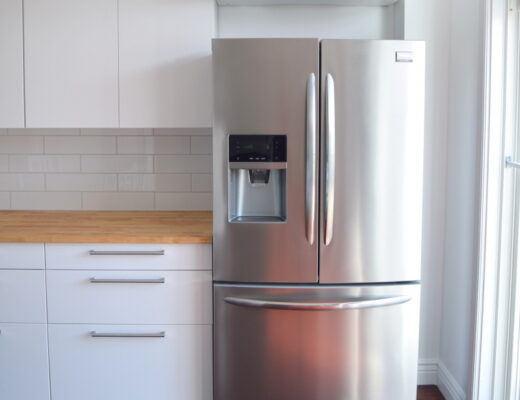
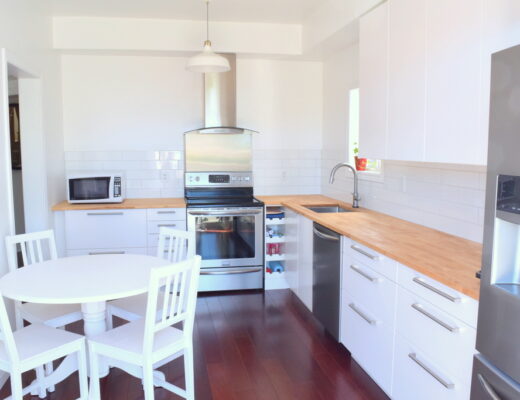
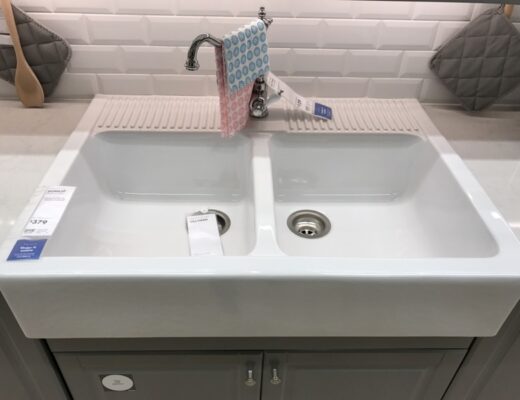
No Comments